San Pedro is a largely illegal substance, and we do not encourage or condone its use where it is against the law. However, we accept that illicit drug use occurs and believe that offering responsible harm reduction information is imperative to keeping people safe. For that reason, this guide is designed to enhance the safety of those who decide to use San Pedro and mescaline.
This article has been medically reviewed byKatrina Oliveros, MSN-ED, BSN
Maria Katrina is a trauma-informed Wellness Educator and Psychedelic Harm Reduction Consultant. Beyond nursing, she supports health & wellness teams through medical aid, psychedelic harm reduction, and integration services.
So, you’ve read up on the San Pedro cactus, Echinopsis pachanoi (Trichocereus pachanoi). You know its botanical and cultural background and what you might expect from an experience with the mescaline it contains. But you’ve yet to try this sacred cactus for the first time.
Maybe you’ve already had a Huachuma experience deep in the Andes mountains of Peru and are ready to work with this remarkable psychedelic plant medicine on your terms without returning to South America for a San Pedro ceremony.
Maybe you’ve heard of the peyote cactus, Lophophora williamsii, sacred to the Native American Church, but are looking for a more sustainable source of the entheogen, mescaline.
In any case, you might find yourself wondering how to prepare San Pedro for your own use.
Things to keep in mind when preparing San Pedro cactus
Why bother?
A recommended dose of the hallucinogenic mescaline for a beginner is around 200-300mg. On average, this corresponds to 200-300 grams of whole fresh cactus.
There are many beautiful things about San Pedro. But taste and texture are not on that list. Properly prepared cactus teas or brews are more palatable, easier to store, and may produce less nausea.
What should the prep area look like?
Aside from any ritual observances you may have in mind for preparing San Pedro, all you need as a prep area is a kitchen or any other space in which you’d prepare food.
Master the Skill of Microdosing
Enter your info to start your journey on Third Wave's Microdosing Course! Discover a science-based framework for transformational microdosing.
"The course gave me hope, a new way from what I've read and researched before. It has content which any reader can relate to whether you're an addict, an alcoholic or someone suffering from depression or other mental or spiritual ailments. I now feel empowered to take responsibility for my life!"
-Melissa P.
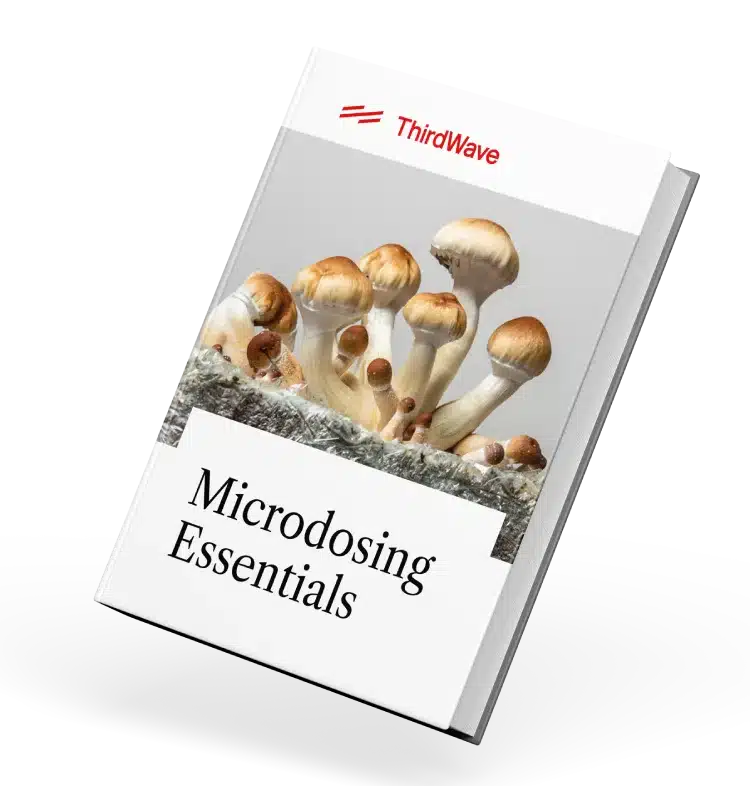

Master the Skill of Microdosing
Enter your info to start your journey on Third Wave's Microdosing Course! Discover a science-based framework for transformational microdosing.
"The course gave me hope, a new way from what I've read and researched before. It has content which any reader can relate to whether you're an addict, an alcoholic or someone suffering from depression or other mental or spiritual ailments. I now feel empowered to take responsibility for my life!"
-Melissa P.
Any special gear/tools/etc.?
Making a San Pedro tea or brew does not require anything you wouldn’t usually find in the kitchen. You will need a large saucepan, kitchen knives for slicing or chopping, a cooktop, colander or strainer, and a t-shirt or cheesecloth.
If the cactus you’re working with has long spines, you may want heavy leather gloves.
Side note: If the spines are long, you may have a different species of cacti, such as Peruvian Torch (Echinopsis peruviana) or Bolivian Torch (Echinopsis lageniformis syn. Trichocereus bridgesii), which may require different dosages.
Making San Pedro Tea
This technique (or tek) isn’t new or unique. The San Pedro cactus, native to countries from Ecuador to Bolivia, has many thousands of years of ceremonial use by Chavin shamans throughout the region.
Much of the traditional Andean use of Trichocereus cacti for San Pedro or Wachuma ceremonies follow a similar process. However, many psychonauts across the world have developed unique variations.
1. Source and estimate your dose
This isn’t strictly a preparation step, but it’s necessary. A recommended dose of San Pedro for a beginner is around 200-300mg of mescaline. On average, this corresponds to 200-300 grams of fresh cactus.
2. De-spine, peel, and chop
Remove the spines with pliers, or cut them out, taking minimal flesh in the process. Peel the translucent waxy outer layer off the cactus, leaving the dark green flesh. This verdant layer is thought to contain the most mescaline.
Some recipes only use the darker green material and discard the rest, while others use the whole cactus. Both work, though removing the paler flesh is thought by some to reduce nausea. Whatever you choose, finely chop the cactus flesh or use a food processor to break it down into small pieces.
3. Simmer
Place cactus material in a saucepan or slow-cooker, with three times as much water as there is cactus, bring to a low boil/simmer, then cook on low heat for at least 6 hours.
You could add lemon juice, as some people think this aids mescaline extraction, but this isn’t a proven fact. Do not let the tea boil dry! This will ruin your brew, your saucepan, and possibly your kitchen!
4. Strain the cactus material out of the tea
Using a clean t-shirt or cheesecloth, strain the cactus out of the tea. This material can be re-boiled in water separately to get any remaining psychoactive alkaloids.
The remaining liquid is then added back to the main brew. But if you didn’t rush the previous step and used a food processor, there won’t be much active ingredient left to extract.
5. Gently simmer some more to reduce volume.
This step can take some hours, so be patient. Ideally, you should get the amount of liquid down to no more than 1 cup per full dose.
This step isn’t as necessary if you’re microdosing, as you’ll only be using a relatively small amount of the liquid. Most psychoactive cactus preparations can cause temporary nausea early in the trip (though less than ayahuasca). So, you don’t want to be trying to drink and then keep down a liter or two of San Pedro tea.
6. Store or use.
You can keep cactus tea safely in the fridge for up to a week.
If you want to keep your tea for longer, freeze individual doses or microdoses so that you don’t have to defrost more than necessary at any one time.

A final word on mescaline dosage and safety
Mescaline concentrations can vary considerably between individual plants. As such, a preparation of San Pedro, made with 200-300 grams of cactus, could be anywhere between mild and robust in psychedelic strength. It’s common to estimate dose by the length of pieces of cactus.
But remember that thicker pieces of cactus weigh more and could contain much more mescaline.
For example, a section of cactus 3.5 inches in diameter would have more than twice the mescaline of a section that is 2.4 inches in diameter.
As recommended by Fire Erowid herself, the point here is to not assume too much about the mescaline content of any given cactus. Erowid estimates the maximum “safe “dose of mescaline to be around 1000 mg, however, Erowid also calls that dose “dangerous ground to tread on.”
Even 500 mg is considered an “extreme dose” So, always stay well below that threshold and somewhere between a low to moderate dose. Erring on the side of caution is critical until you have a source of cactus that is predictable in potency.
It’s also worth remembering that mescaline is much longer-acting than other psychoactive plant medicines like psilocybin. So when it comes to planning your psychedelic experience, allow plenty of time for your journey and rest afterwards.
Suppose you’re a beginner or aren’t comfortable dealing with the uncertainty around dosing. In that case, the San Pedro providers in Third Wave’s directory may be a good option for you.
Want to learn more?
Third Wave’s Mushroom Grow Kit and Course teaches you how to easily grow mushrooms from home. Plus, it pays for itself in just one harvest! You should be able to yield 3-4 harvests from just one kit.

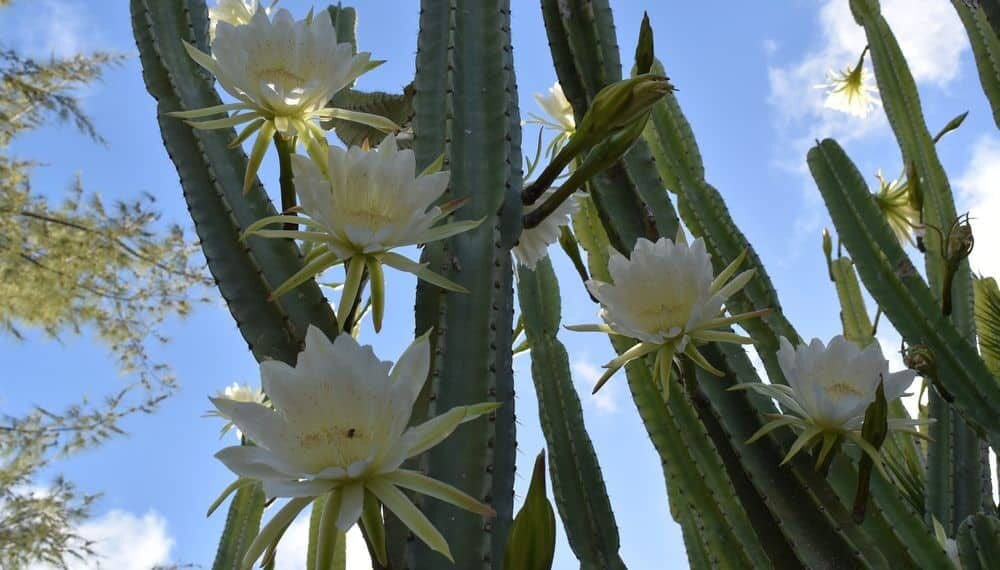
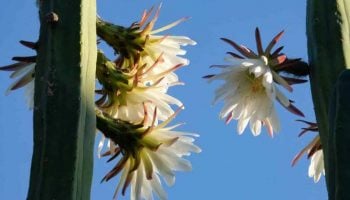
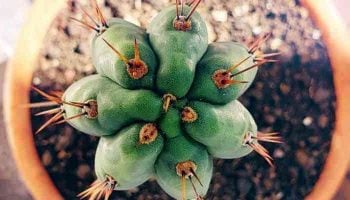
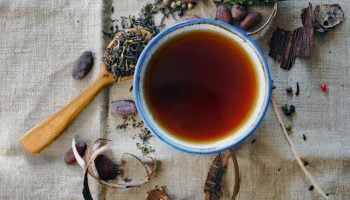



Good information but the photo shown is actually of Cereus Peruvianus which is not San Pedro.
San Pedro is Trichocereus Pachanoi.
and i belive them to be the strongest, also try frezzing your dry’d or fresh catai, as this burst’s all the cell wall inside the catai releasing all the mescaline.
Hello,
This paper describes a validated method for dosing your cactus tea:
https://zenodo.org/record/6409376#.YnlFsdpByUl
It also points out that there is a (large) difference between the top part of the cactus and the other parts. In fact, there’s a top-down mescaline gradient.
Hope this helps in creating safe and insightful journeys…
Interested in finding out more about the San Pedro I had way back in the day,in Ecuador. No doubt, the experience last longer than other sources, almost 18 hours plus. And that includes hiking in the mountains for hours!
I was probably in the larger dose experience and I was taking less than my fellow travelers. Quite the most unique trip.
Great page. I wanted to know if adding a weak MAO Inhibitor such as Passion Flower could be recommended.
I have the powdered San Pedro ..I think 400grams .. I bought a bottle of San Pedro for microdosing ,where the person had put alcohol ,agave and San Pedro together ,cooked up and you took 3-4 drops on your tongue.
I don’t want to mess up the process
Does anyone know the exact amounts of San Pedro to alcohol yo agave please ,ti make an effective batch to microdose with please ?
Thanks for your question! For further microdosing information, you can refer to this guide – https://thethirdwave.co/microdosing/mescaline/
I just want to micro dos the San Pedro. Is it possible to freeze it and blend with juice and ice, maybe some Suger. How much should I fix. I live in Mexico so here we have a lot to choose from.
Thanks kb
I just moved to a new area and this cactus is everywhere. I’m looking to try for the first time. Can you tell me which is the best part of the cactus to use? Is the end more potent than the thickest part of the stem?
Hola, I don’t have access to a scale currently. I’m living in the low jungle mountains of Peru. Assuming a 4 inch diameter, how many inches is the 250gm introductory dose?
Thank you for any information in advance.
Dan
Awesome…
I am almost ready to prepare.
Have all the tools and ingredients.
I need a good ego-death…
Question…
Please email an answer…
[email protected]
That skin was a nightmare to remove.
Can I remove spins and put the rest into a blender….turn to mush and then boil ??? Skin included…the other way turned out so so ..very mild and I slow cooker for at least 12 hours…
So let’s say I have a San Pedro cactus that is too fet tall. If I wanted to cut half of it and prepare it and then freeze it, what happens to the rest of the cactus that is still in the ground? Does it scab over and continue to grow taller? This is my first time working with this plant.
Hi John – That’s a great question to post in our community forum https://community.thethirdwave.co/. You can also check out the Third Wave guide on San Pedro: https://thethirdwave.co/psychedelics/san-pedro/
The cactus will scab over and eventually grow new shoots. 😉
Cool, thank you!
thank you for all your info very helpful preparing for first journey, been growing for many years have figured the process of growing and reproducing the plans, now time to see what I’ve create , thank you
The article recommends 200-300 grams of fresh cactus as a starting dose. Does this need to be dried first? Wouldn’t putting it in a food processor make lind of a mush? Or is that what we want, maximum surface area?
Hi John — I would recommend you join our free, private community and post the question there. There are so many experts who will be glad to answer these questions: https://community.thethirdwave.co/
Thanks,
Dorth Raphaely
Third Wave GM.
Greetings from Arugam Bay, Sri Lanka,
Only Pachemama knows how San Pedro came to Sri Lanka. It grows wild in large stands and also used an an ornamental shrub.
Do you have a TEK for powdered San Pedro skin?
Why can’t you just eat the green skin?
You can
https://thethirdwave.co/consuming-san-pedro/
You can. I ate some as a friend (a trained San Pedro practitioner) and I were preparing cactus for brewing. I didn’t eat enough for any effect, just to see what it was like. It wasn’t unpleasant, but it also didn’t taste good. It was fairly neutral.
I believe you’d have to eat a LOT of fresh cactus to have any effect – the water content takes up a lot of the mass. So boiling it down or drying it and making a powder are the two most efficient ways to process it.
In the future I’m going to dry the skin and then pulverize it into a powder. Making tea and then freezing most of it isn’t all that practical, since I don’t plan to use full doses of San Pedro very often – maybe once every week or two at most. (I only sat in ceremony once, with my friend, and I’m now going to be drinking on my own. I’m starting with a small dose to see how I handle it without a guide.)
How i wish more authors with this type of content would take the time you to research and write so well. I am very impressed with your vision and insight. Microdosing Essentials, i think its high time people spare out time to really go through that book. The time is fast approaching when magic mushroom and microdosing products will be at the fore front of medication in the world.
I have 500 grams of dried SP cactus skin, any idea what this amount would equate to, with green cactus skin?
All the teks use fresh skin, not dried, assume dried is acceptable for making tea?
Be nice to know, as it relates to recipes and dosage.
Thanks, Mark.
I tried SAN Pedro in 1973; it was the last psychedelic I ever took. Regarding a comment someone else here in the comments made, my trip sure as hell didn’t last 18 hours; more like 6. LSD only last 12 hours and it’s waaay stronger. I should take this opportunity to apologize to the people whose garden I whacked that 12″ chunk of cactus out of. It was a house by the railroad tracks, somewhere in California; that’s all I’ll say… The stuff made me (initially) nauseous as hell… and tasted like shit. Have fun, people; I’m done…maybe next incarnation…
ps. I’m guessing most of the commenters are either not native English speakers or were homeschooled, because the spelling is atrocious. Just an observation…